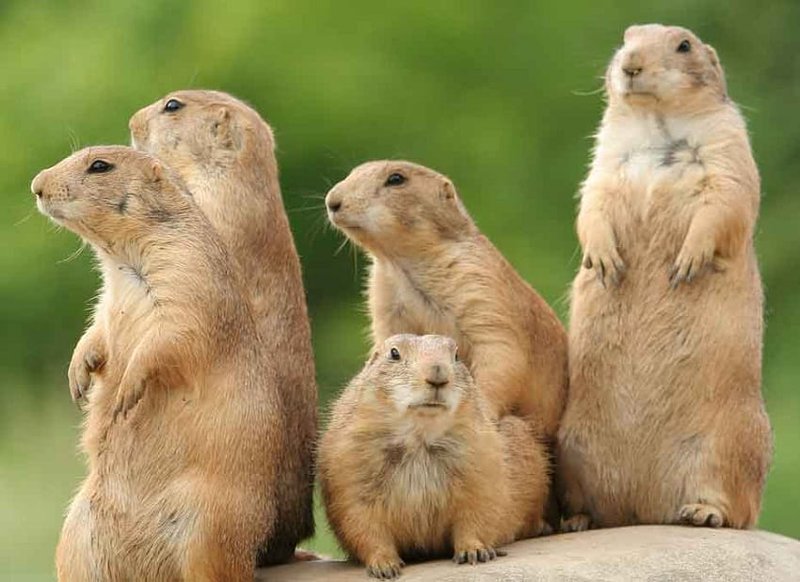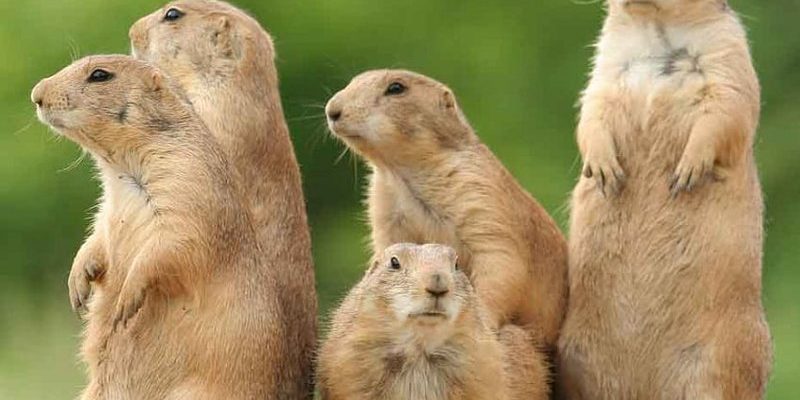
You can think of prairie dogs as the architects of the grasslands. Their colonies, or “towns,” play a significant role in the health of the ecosystems around them. By digging extensive tunnel systems, they not only create homes for themselves but also aid in aerating the soil and cycling nutrients. So, when you stop and appreciate these charming animals, you’re looking at a critical part of the prairie ecosystem.
Let’s dive deeper into where prairie dogs live and the unique habitats they occupy. We’ll explore the different species, their living conditions, and what makes their homes so special.
Prairie Dog Species and Their Habitats
There are five main species of prairie dogs, each with slightly different habitat preferences. These include the black-tailed, white-tailed, Utah, Gunnison’s, and Mexican prairie dogs. Surprisingly, each of these species has adapted to live in distinct environments.
- Black-tailed Prairie Dogs: These are the most common species and can be spotted in the Great Plains of the United States. They prefer shortgrass prairie where they can dig deep burrows.
- White-tailed Prairie Dogs: Found mainly in the Rocky Mountain region, they thrive in areas with sagebrush and sparse grass.
- Utah Prairie Dogs: This endangered species lives in the Utah regions, favoring open grassy areas near shrubs.
- Gunnison’s Prairie Dogs: Located primarily in Colorado and Utah, they like higher elevations and rocky regions.
- Mexican Prairie Dogs: These are found in northern Mexico and the southwestern United States, usually in grassy plains.
Each species plays a specific role in its habitat, making them crucial for the entire ecosystem. For instance, black-tailed prairie dogs are known for their vast colonies, which can extend over hundreds of acres. You might be wondering why their habitats vary so much; it has a lot to do with how they find food, evade predators, and interact with other wildlife.
Climate and Geography: What Prairie Dogs Prefer
Prairie dogs thrive in areas that offer plenty of sunshine, dry weather, and grasslands. Honestly, they’re not big fans of thick forests or wetlands. They prefer open spaces that allow them to see potential threats, like coyotes or hawks, coming from a distance.
The climate also plays a significant role in shaping their habitats. Most prairie dog species prefer areas with a semi-arid climate. This means they can cope with drought conditions and still find the grass and plants they need to survive. This resilience is fascinating when you think about it. Just like us, prairie dogs have to adapt to their surroundings to thrive.
In terms of geography, prairie dogs usually establish their colonies on flat or gently rolling terrain. That makes it easier for them to dig their elaborate burrows and create the intricate social structures they’re known for. These systems can be quite complex, with different levels and chambers for sleeping, nesting, and storing food.
The Importance of Burrows in Prairie Dog Habitats
Burrows are more than just homes for prairie dogs; they are vital to their survival. A single prairie dog can create extensive tunnel systems that can stretch for hundreds of feet underground. These burrows provide shelter from predators and harsh weather conditions.
Inside these sprawling networks, prairie dogs have designated areas for different activities. For instance, they usually have nursery chambers for raising their young, as well as sleeping areas where they can rest safely. Plus, these burrows can also help them regulate their temperature. On hot summer days, the subterranean environment remains cooler, while in the winter, it can be warmer compared to the surface.
Moreover, their burrowing behavior has wider environmental repercussions. By digging up the soil, they help promote nutrient cycling, which supports grass growth. It’s like they’re tiny landscapers, shaping their world in a way that benefits many other species, including insects, birds, and even larger mammals.
Social Structure: Living in Colonies
You might think of prairie dogs as solitary animals, but they are actually quite social. They live in colonies, often referred to as “towns,” where hundreds or even thousands of them can reside. This social structure is fascinating and plays a significant role in their survival.
These towns are structured communities where prairie dogs communicate using a series of barks and chirps. You might be surprised to learn that they have complex vocalizations that can convey specific messages, such as warning of a predator or alerting others to food sources. It’s like having your own neighborhood watch!
Living in a colony offers several advantages. For one, it increases the chances of spotting predators early, allowing the group to react more quickly. Additionally, there’s safety in numbers. Fewer prairie dogs are likely to fall prey to predators when many eyes are watching.
Threats to Prairie Dog Habitats
While prairie dogs are resourceful and resilient, they face several threats to their habitats. Urbanization is a significant concern as expanding cities and agricultural lands encroach on their natural environments. As more land is developed, the open spaces they rely on are shrinking.
Another major threat is habitat fragmentation. This occurs when larger habitats are broken up into smaller, isolated pieces, making it difficult for prairie dogs to find mates and forage for food. It’s somewhat like trying to meet friends when the only paths are blocked by construction sites; it just becomes tough to connect.
Additionally, prairie dogs face threats from diseases like sylvatic plague, which can devastate their populations. This is particularly concerning for endangered species like the Utah prairie dog. Conservation efforts are crucial to help preserve their habitats and ensure their survival in the wild.
Conservation Efforts for Prairie Dog Populations
Conservationists are actively working to protect prairie dogs and their habitats. One strategy involves habitat restoration, which aims to bring back natural grasslands by removing invasive species and planting native grasses.
Another approach focuses on creating protected areas or reserves where prairie dogs can thrive without the threat of urbanization or habitat destruction. These protected spaces often support not just prairie dogs, but a variety of other species that rely on the grassland ecosystem.
Community education also plays a vital role. Raising awareness about the importance of prairie dogs helps local communities understand how these small animals impact the environment. By informing people about their ecological role, conservationists can foster a sense of stewardship for these creatures and their habitats.
Why Understanding Prairie Dogs Matters
Understanding where prairie dogs live and how they interact with their environment is essential for several reasons. First, prairie dogs are considered a keystone species. Their presence supports a diverse array of wildlife, from predators to insects. Protecting them means protecting the whole ecosystem.
Moreover, studying prairie dogs gives scientists valuable insights into the health of grassland ecosystems. Changes in their populations can indicate larger environmental shifts. So, when you hear about prairie dogs in the news, it’s not just about cute animals; it’s a signal about the state of our planet’s health.
In summary, prairie dogs are incredible creatures that play a significant role in their habitats. By diving into their world, we not only learn more about these animals but also see the interconnectedness of life within the grassland ecosystems they inhabit.
Knowing where prairie dogs live is just the beginning; it opens up a broader conversation about conservation, ecology, and our responsibility to protect these vital environments. So next time you see a prairie dog, remember that it’s part of a larger story—one that challenges us to consider how our actions impact these charming little architects of the plains.

